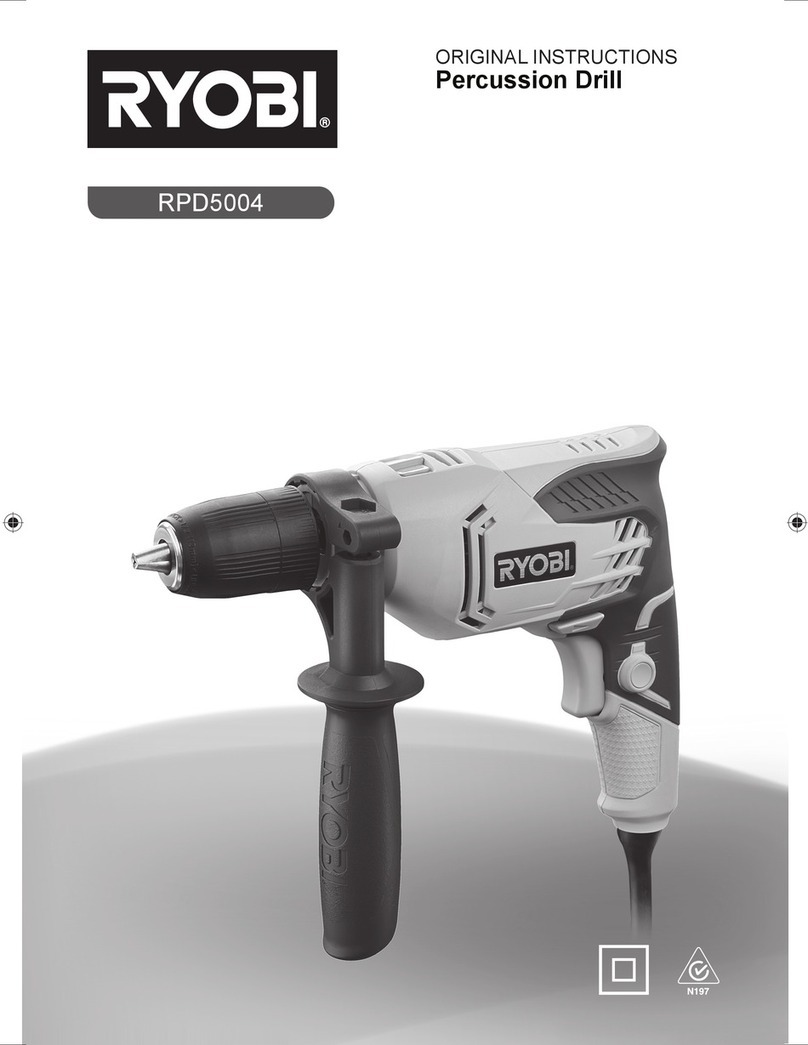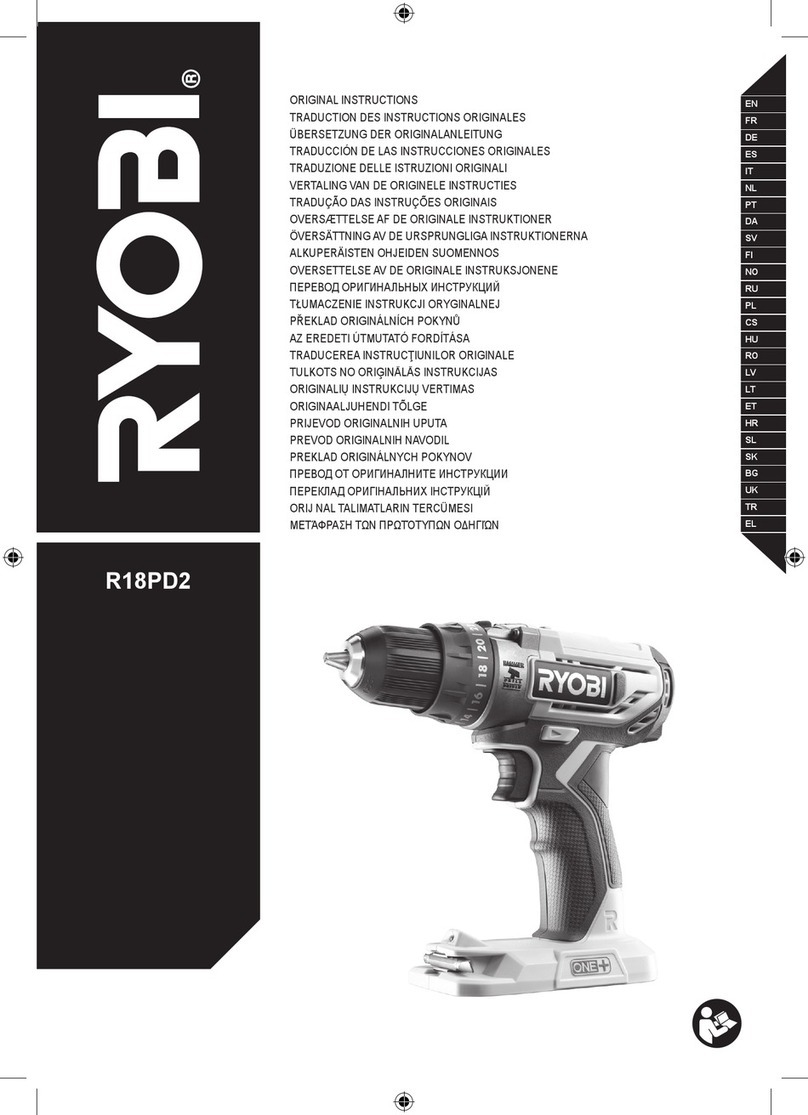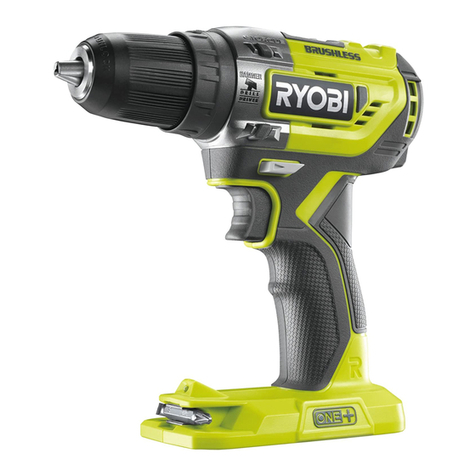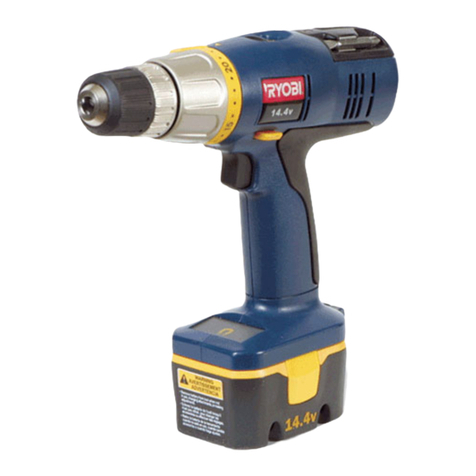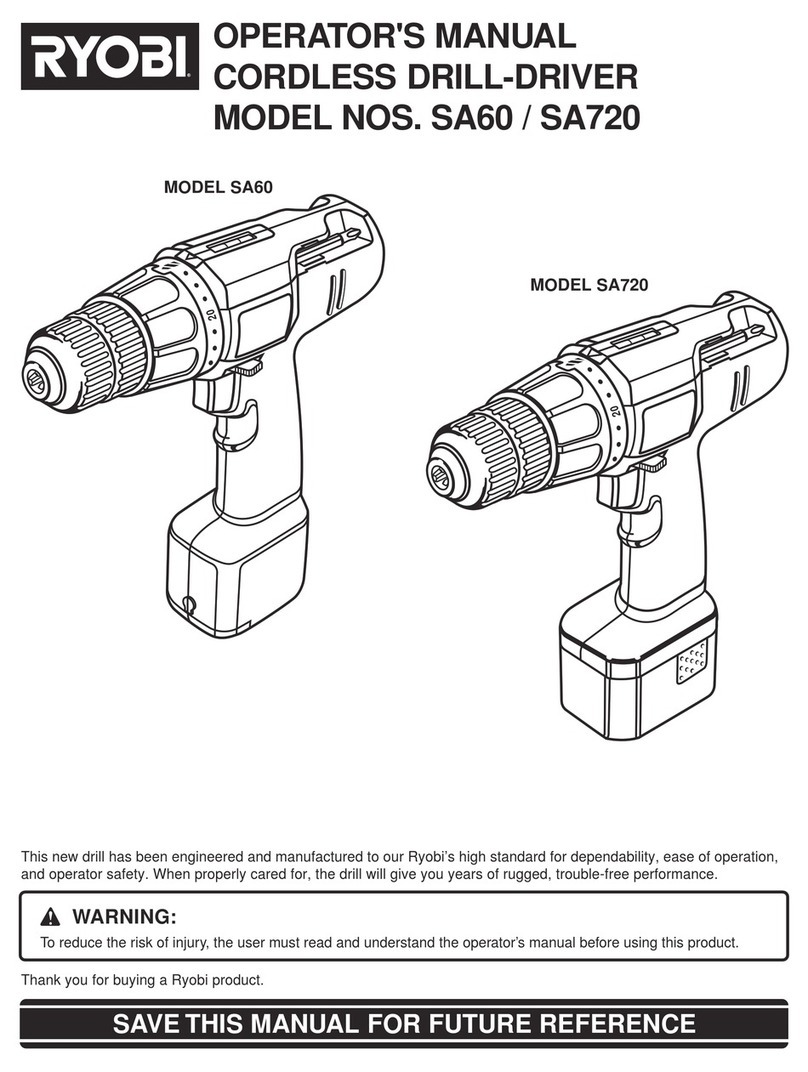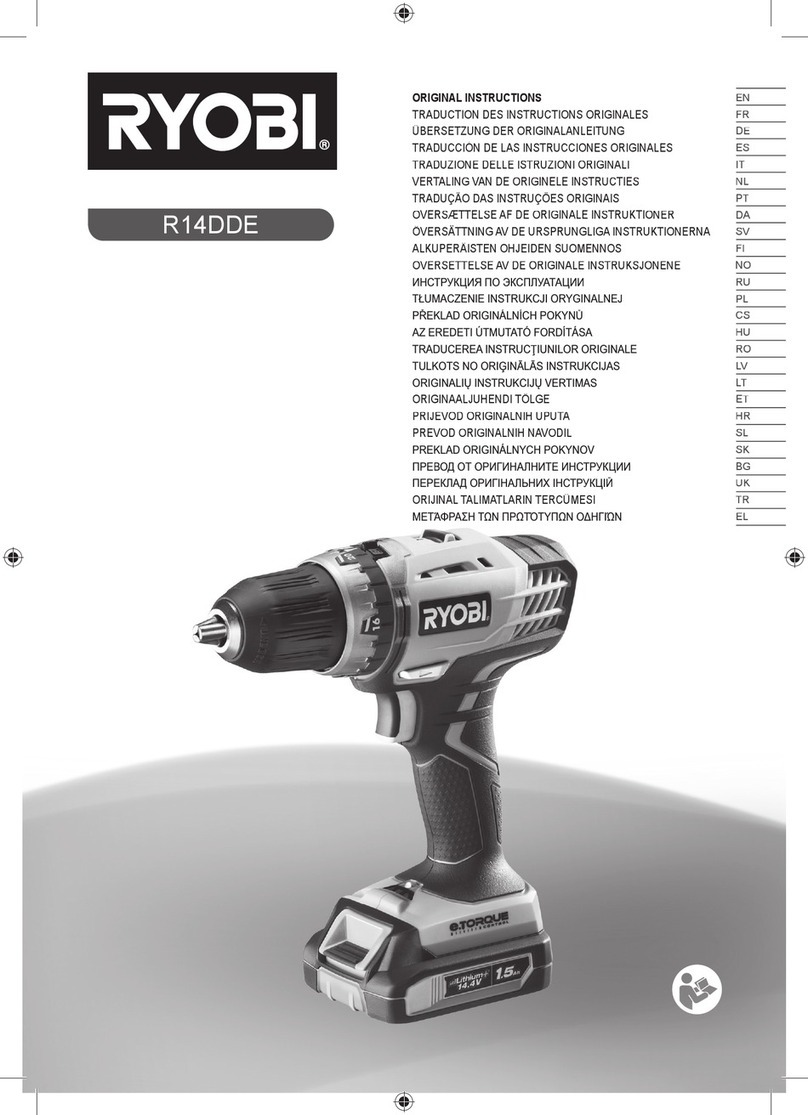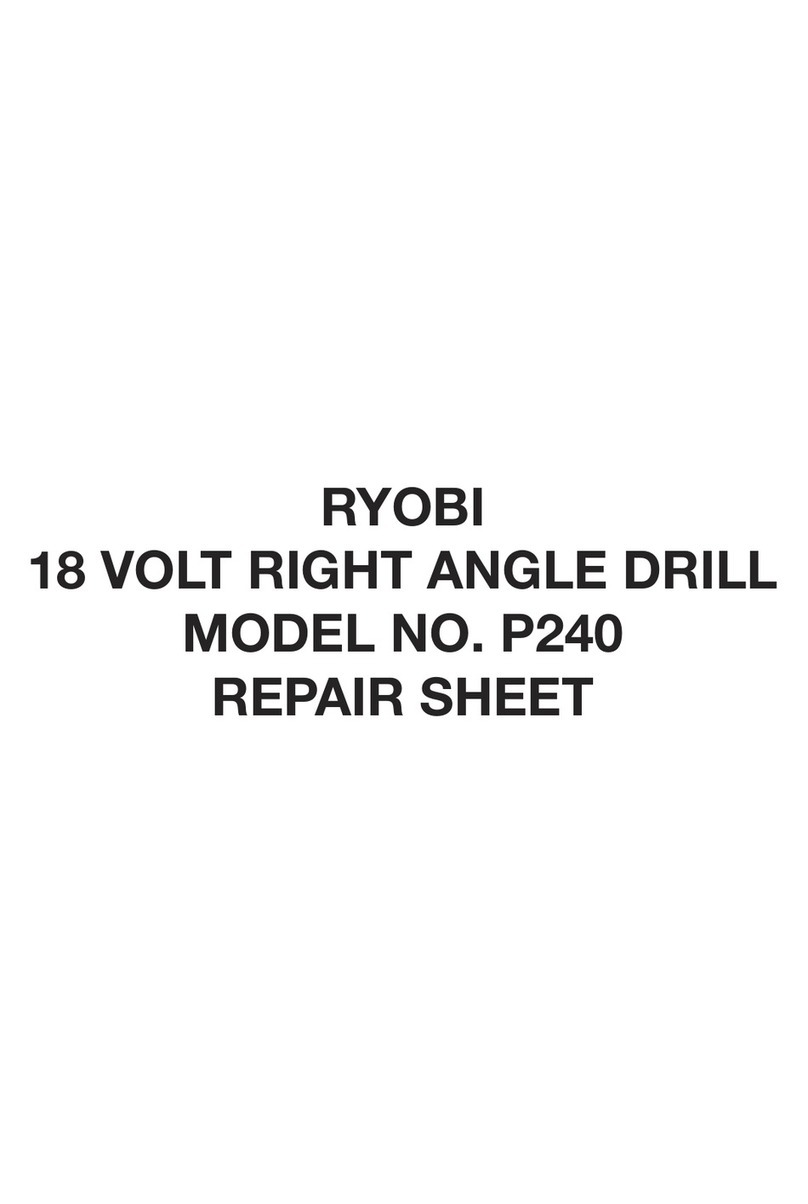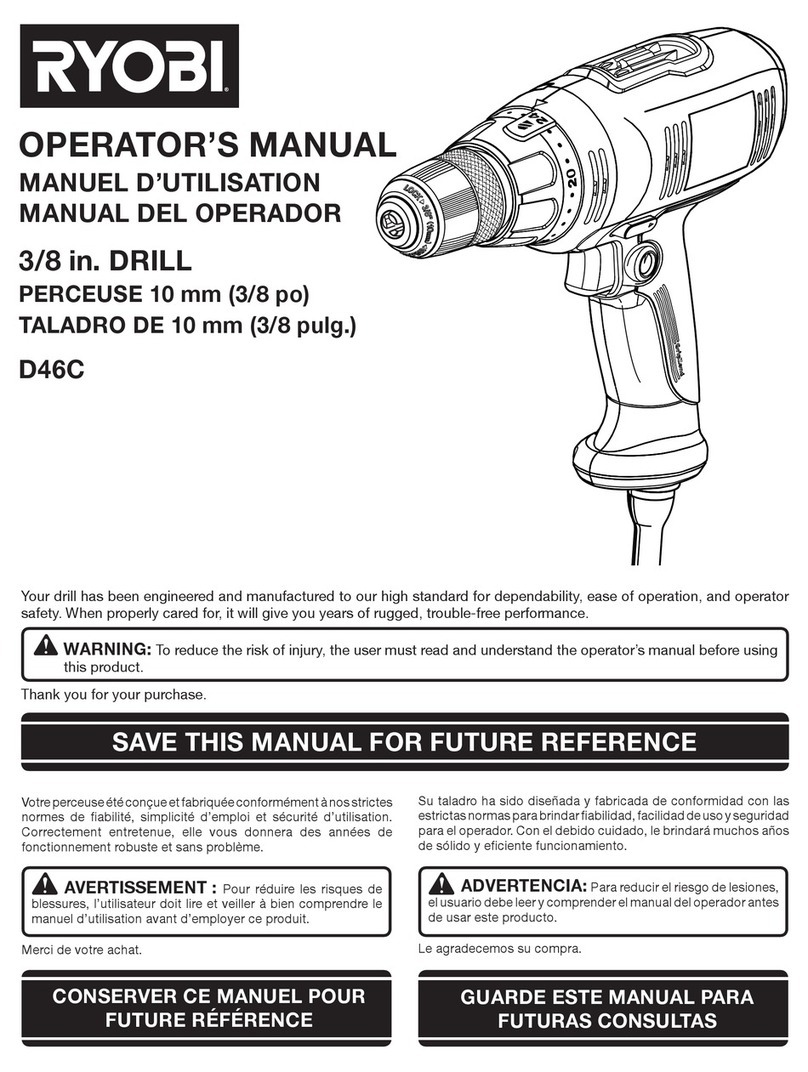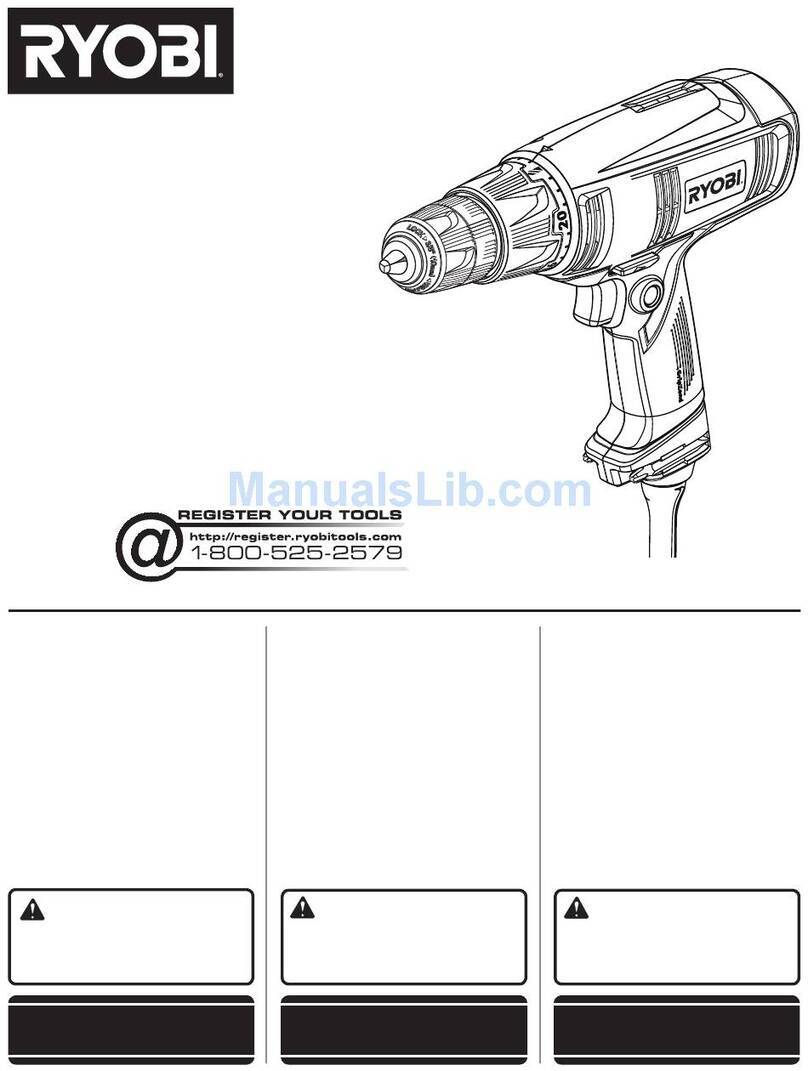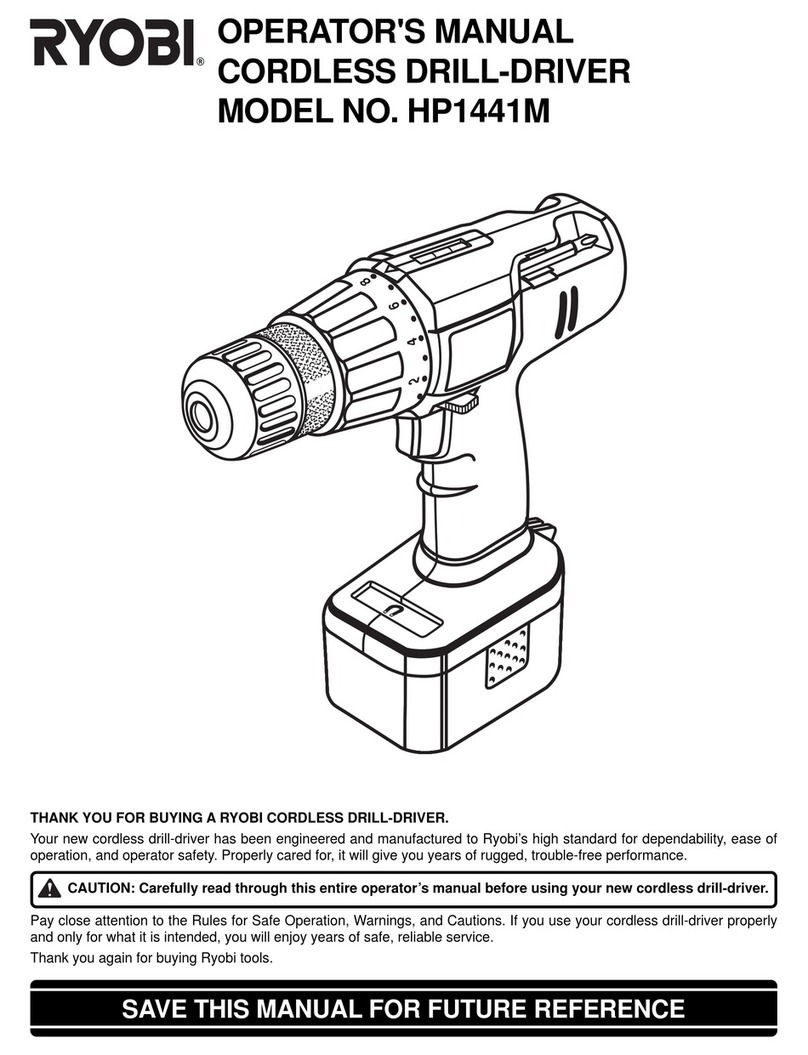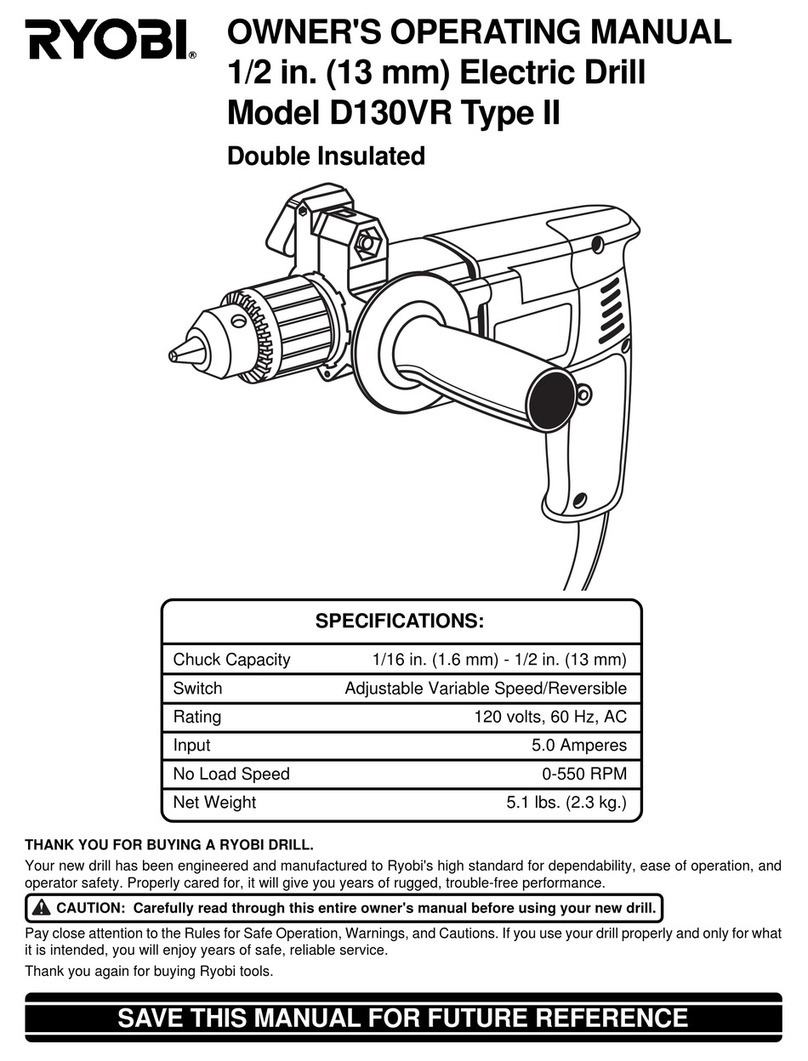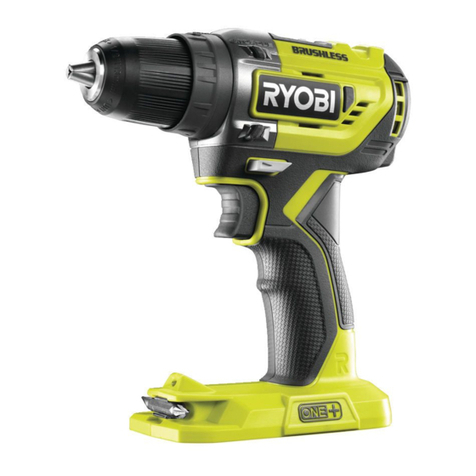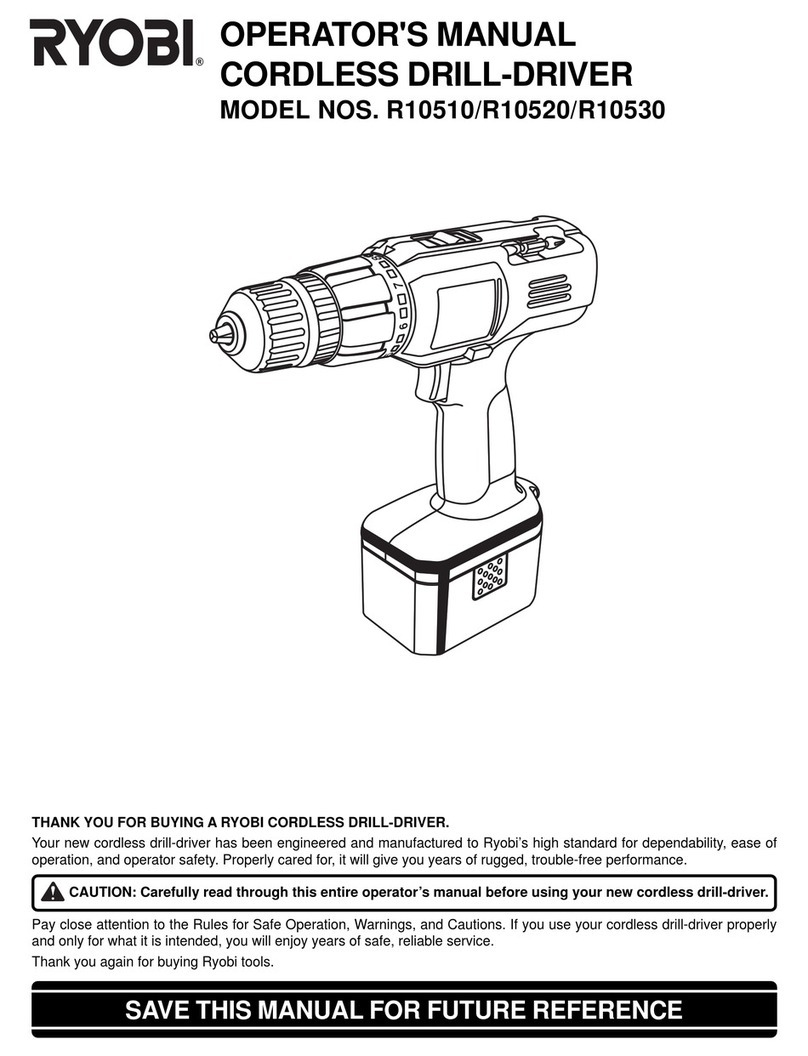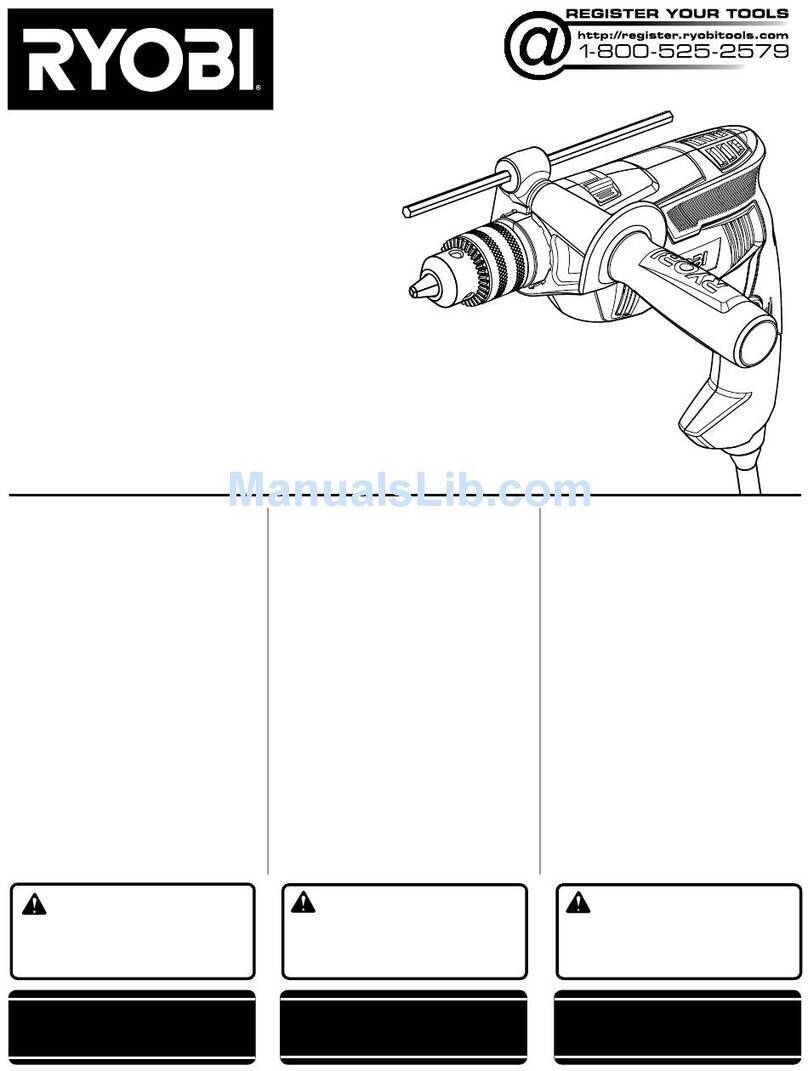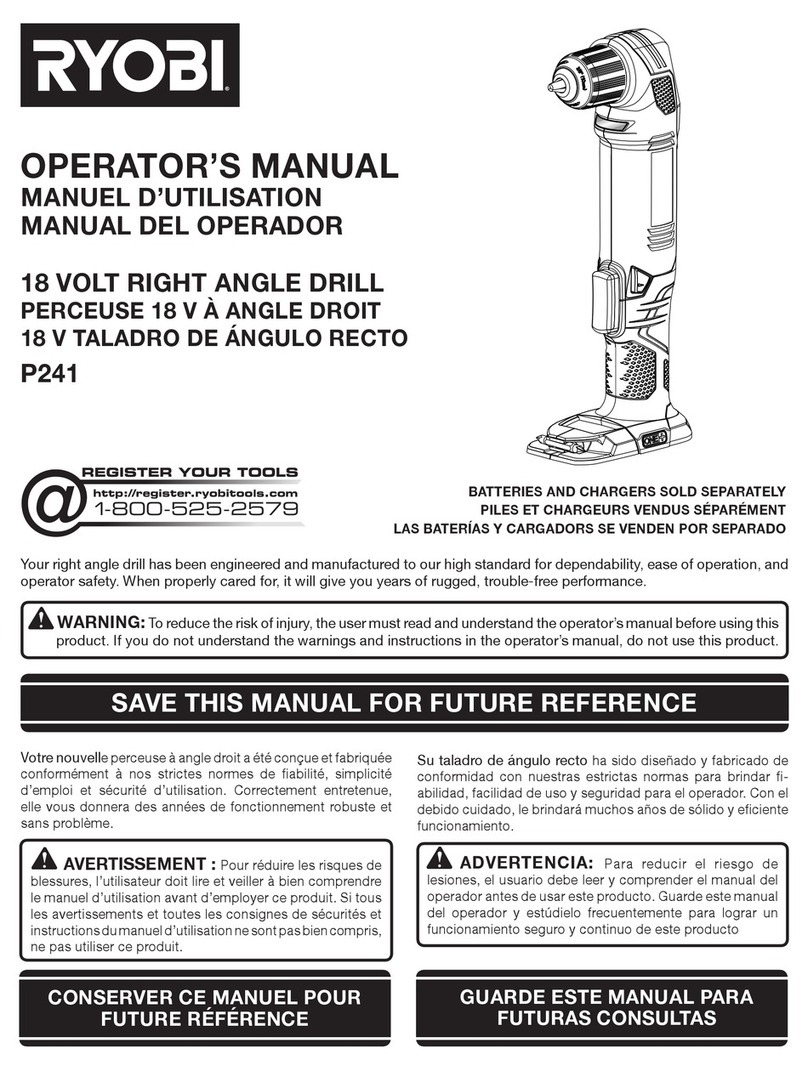6
OPERATION
nGreen LED on = When battery pack is inserted into
charger, indicates hot battery pack or that battery pack
is out of normal temperature range.
nYellow and Green LEDs on = Deeply discharged or
defective battery pack.
nNo LED on = Defective charger or battery pack.
CHARGING THE BATTERY PACK
Battery packs for this tool are shipped in a low charge
condition to prevent possible problems. Therefore, you
should charge it until the green LED on the front of the
charger comes on.
NOTE: Batteries will not reach full charge the fi rst time they
are charged. Allow several cycles (operation followed by
recharging) for them to become fully charged.
CHARGING A COOL BATTERY PACK
If battery pack is within normal temperature range, the red
LED on charger will come on.
NOTE: If the charger does not charge the battery pack
under normal circumstances, return both the battery pack
and charger to your nearest Ryobi Authorised Service
Centre forelectrical check.
nCharge the battery pack only with a recommended
charger.
nMake sure the power supply is normal household volt-
age, 240 volts, 50 Hz, AC only.
nConnect the charger to the power supply.
nPlace the battery pack in the charger aligning raised
rib on the battery pack with the groove in the charger.
See Figure 8.
nPress down on the battery pack to be sure contacts
on the battery pack engage properly with contacts in
the charger.
nNormally the red LED on charger will come on. This
indicates the charger is in fast charging mode.
nRed LED should remain on for approximately 1 hour
then the green LED will come on. Green LED on in-
dicates battery pack is fully charged and charger is in
maintenance charge mode.
NOTE: The green LED will remain on until the battery
pack is removed from the charger or charger is discon-
nected from the power supply.
nIf both yellow and green LEDs come on, this indicates
a deeply discharged or defective battery pack.Allow
the battery pack to remain in the charger for 15 to 30
minutes. When the battery pack reaches normalvoltage
range, the red LED should come on. If the red LED
does not come on after 30 minutes, this mayindicate
a defective battery pack and should bereplaced.
nAfter normal usage, a minimum of 1 hour of charging
time is required to fully recharge battery pack.
nThe battery pack will become slightly warm to touch
while charging. This is normal and does notindicate a
problem.
nDo not place the charger and battery pack in an area
of extreme heat or cold. They will work best at normal
room temperature.
NOTE: The charger and battery pack should be placed
in a location where the temperature is more than 10°C
but less than 38°C.
nWhen batteries become fully charged, unplug the-
charger from power supply and remove the battery
pack.
CHARGING A HOT BATTERY PACK
When using the tool continuously, the batteries in the bat-
tery pack will become hot. You should let a hot battery pack
cool down for approximately 30 minutes before attempting
to recharge. When the battery pack becomes discharged
and is hot, this will cause the green LED to come on in-
stead of the red LED. After 30 minutes, reinsert the battery
pack in the charger. If the green LED continues to remain
on, return battery pack to your nearest Ryobi Authorised
Service Centre for checking or replacing.
NOTE: This situation only occurs when continuous use of
the tool causes the batteries to become hot. It does not
occur under normal circumstances. Refer to “CHARGING
A COOL BATTERY PACK” for normal recharging of batter-
ies. If the charger does not charge your battery pack under
normal circumstances, return both the battery pack and
charger to your nearest Ryobi Authorised Service Centre
for electrical check.
TO INSTALL BATTERY PACK
nLock switch trigger on your drill by placing the direction
of rotation selector in center position. See Figure 4.
nPlace battery pack in your drill. Align raised rib on bat-
tery pack with groove inside drill. See Figure 2.
nMake sure the latches on battery pack snap in place
and battery pack is secured in drill before beginning
operation.
TO REMOVE BATTERY PACK
nLock switch trigger on your drill by placing the direction
of rotation selector in center position. See Figure 4.
nLocate latches of battery pack and depress to release
battery pack from your drill. See Figure 2.
nRemove battery pack from your drill.
960931156-01.indd A6960931156-01.indd A6 8/15/02 2:00:29 PM8/15/02 2:00:29 PM
